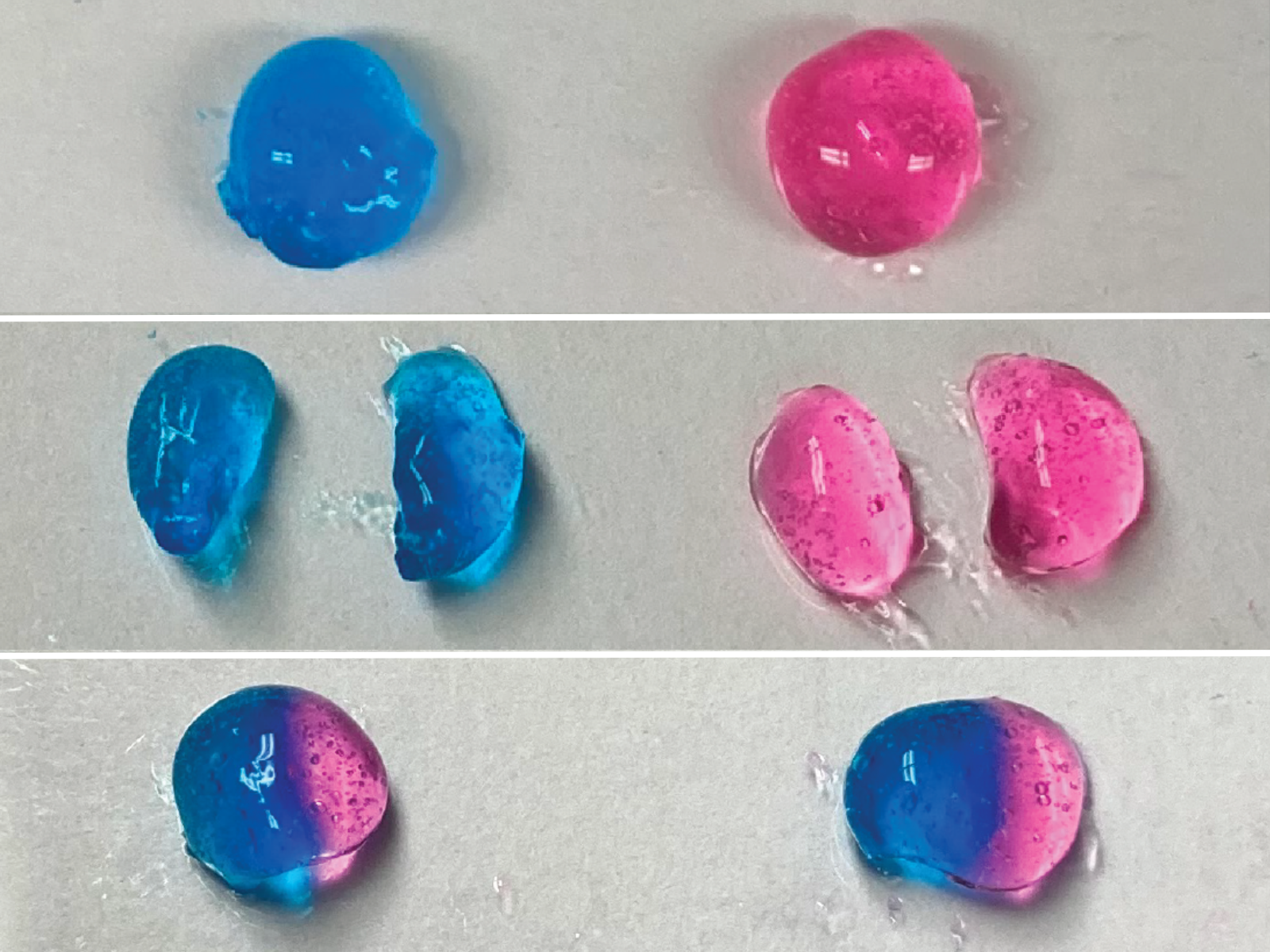A new class of designer gels is on the way, potentially packed with a combination of properties that have traditionally been mutually exclusive to either stiff or soft materials.
Texas Engineers are leading a research team that will develop a mix-and-match process for combining and tuning functional properties by incorporating different types of molecular scale building blocks. The strategy could create soft, processable gels that interact with light in ways typically associated with hard solids and materials that could emulate the mechanical function of natural protein networks to stabilize synthetic cells. The researchers received funding through the National Science Foundation's Designing Materials to Revolutionize and Engineer our Future grant program, which aims to "drive the design, discovery and development of advanced materials needed to address major societal challenges."
"What we'd like to understand in this project is how you can make gels with different functionality and understand their properties based on what they are made of," said Tom Truskett, a co-leader on the project and professor in the Cockrell School of Engineering's McKetta Department of Chemical Engineering.
These gels could also be engineered to change properties dynamically, for example flowing under stress then firming up when allowed to set.
- Adrianne Rosales
This fits well with the research of Adrianne Rosales, assistant professor of chemical engineering and member of the project team.
Her work focuses on polymer-based hydrogels for health-based applications. Understanding how material structure controls properties is beneficial for design of injectable gels loaded with therapeutic cargo, where different properties are required before, during, and after injection.

"We are uncovering fundamental design rules that apply to distinct materials systems built from different chemistries and using them to design innovative gels with unique properties," Rosales said. "This project will help us tune materials to act how we want, when we want, and be able to change when necessary."
NSF funded 37 projects, involving 161 researchers at 61 universities across 30 states through this materials research program. The project team on this work also includes Glen Hocky, assistant professor of chemistry at New York University, and Peter Beaucage and Tyler Martin from the National Institute of Standards and Technology.
The project also includes an educational component. It will build on a program founded by Sean Roberts, an associate professor in the College of Natural Sciences' Department of Chemistry, to provide research experiences to community college students and to support them in transitioning to four-year STEM degree programs.
To create community for these transfer students, the team will pilot a Transfer Interest Group, similar to the First-Year Interest Groups, where small cohorts of students take classes together to acclimate to life at UT.
"We want to make sure that transfer students get the same welcome and resources available to them as first-time in college students, and this project could be a step toward that," said Delia Milliron, chemical engineering department chair and a member of the project team.
Article originally posted on Cockrell School of Engineering.






